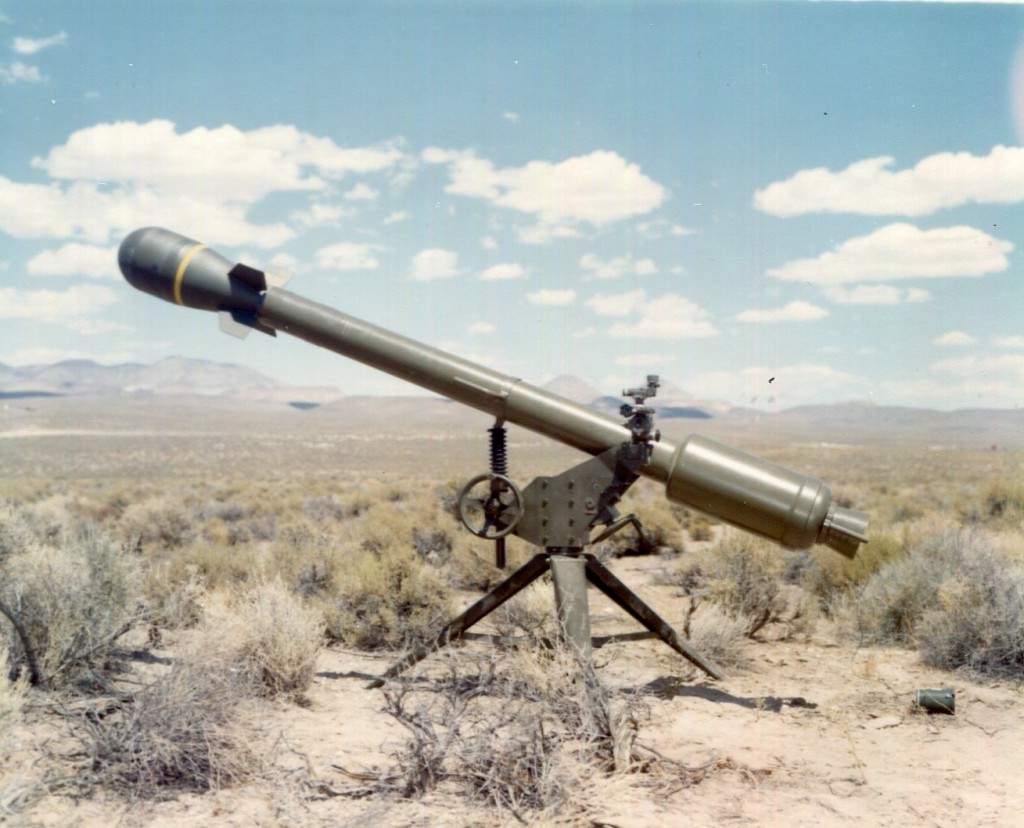

In the game series Fallout, one of the weapons most coveted by players is a portable mini-nuke launcher that, as you might imagine, is capable of destroying basically anything it touches. It fits perfectly within the game’s theme of roaming across the apocalyptic wasteland, dispensing wanton destruction.
Bethesda, the developers behind Fallout, weren’t just pulling something out of thin air when they designed the digital weapon. In the late 1950s, when the threat of nuclear war with the Soviets was lurking around the corner, the U.S. actually created a functioning mini-nuke launcher of their very own.
It was called the M-29 Davy Crockett Weapon System. And the reason it never really made it out of initial testing was because it was probably the most poorly designed weapon system the U.S. military ever thought would work.
The Davy Crockett was a recoilless, smooth-bore gun, operated by a three-man crew, that fired a nuclear projectile. In theory, this weapon gave a small squad the ability to decimate enemy battalions with an equivalent yield of 20 tons of TNT — or roughly the same firepower as forty Tomahawk cruise missiles.
The maximum effective range of the Davy Crockett was about a mile and a half. Anything within a quarter-mile radius of the explosion would receive a fatal dosage of radiation. Anything within 500 feet of the epicenter of the blast would be completely incinerated.
It was so portable that it could either be attached to the back of a Jeep or given to paratroopers for airborne insertion. The weapon technically worked, but not without a bevy of significant problems.
The first major flaw was the aiming. The launcher was flimsy when compared to the immense weight of munitions, so it was prone to toppling over at any moment. It had an unreliable height-of-burst dial, so accurate detonations were nearly impossible. It also didn’t have an abort function, which meant that as soon as it was fired, it’d have to detonate.
To make matters worse, the previously stated half-mile kill radius was only accounted to instant death by radiation. As we’ve learned, being downwind of a nuclear blast almost certainly meant death — maybe not right away, but eventually. So, the three-man crew firing the Davy Crockett, who had at most one mile of safety, could only fire and pray that the winds didn’t turn against them.
For more information on why mini-nukes were an awful idea, check out the video below:
